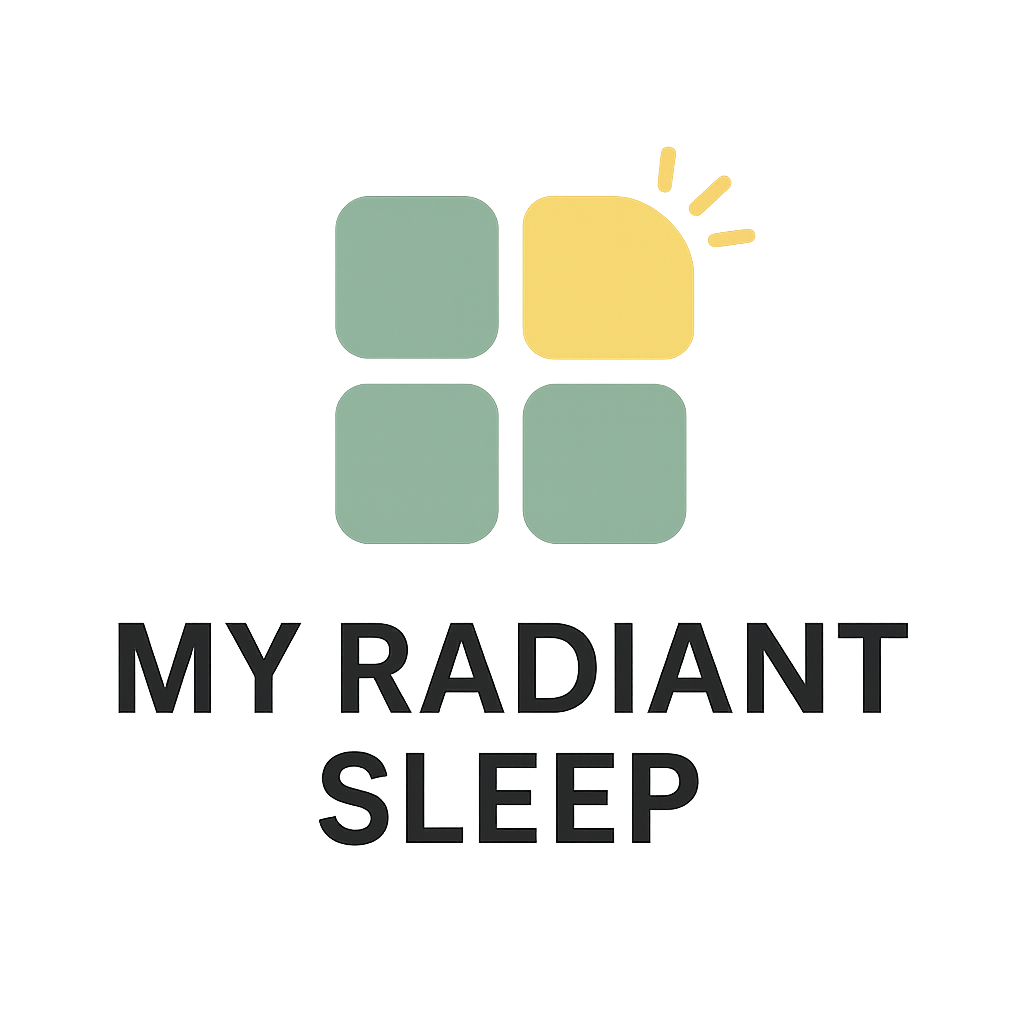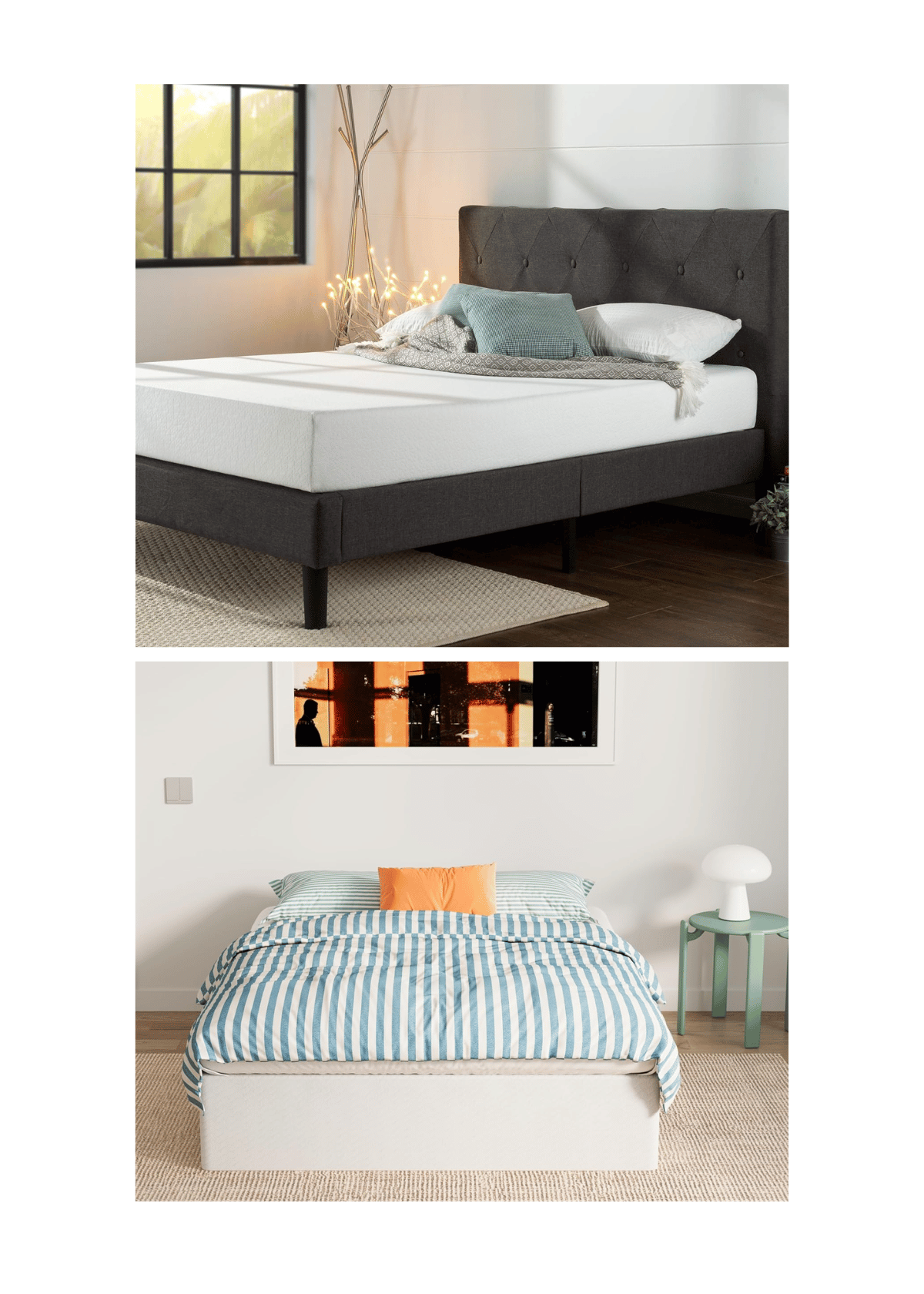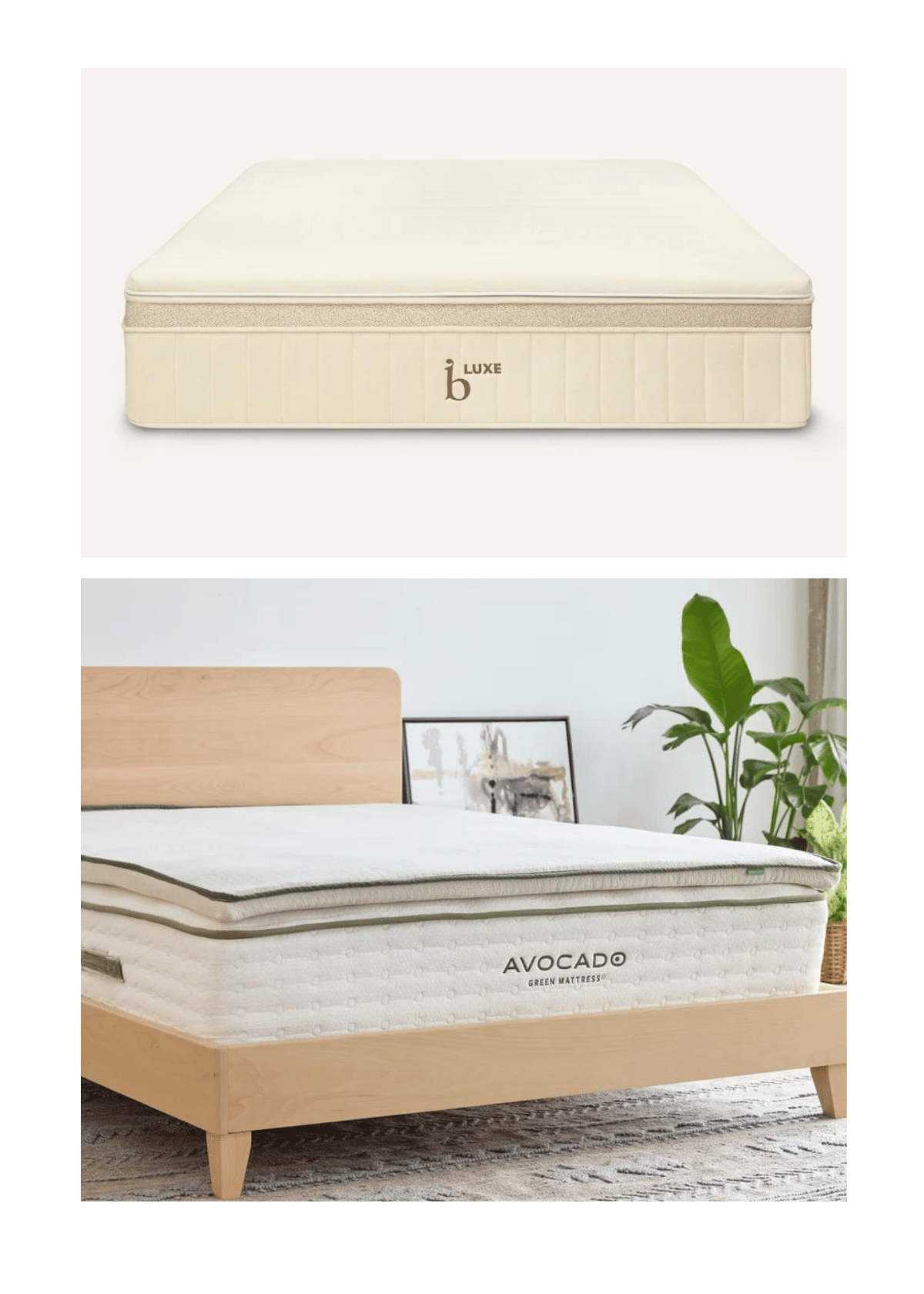(Last Update: 11/20/2025)
Have you ever unboxed a brand-new mattress and immediately noticed a peculiar chemical smell?
That sharp, overpowering scent results from a process known as off-gassing. When mattresses and other materials react with the air, they release certain compounds that can be concerning.
Understanding off-gassing becomes essential if you cherish the essence of a fresh bedroom and prioritize healthful sleep.
I am here to guide you.
After all, a good night’s sleep shouldn't come with unwanted surprises. Let's delve deeper into what off-gassing means, its health implications, and, most importantly, how to reduce exposure.
The Science Behind Off-Gassing: Analysis
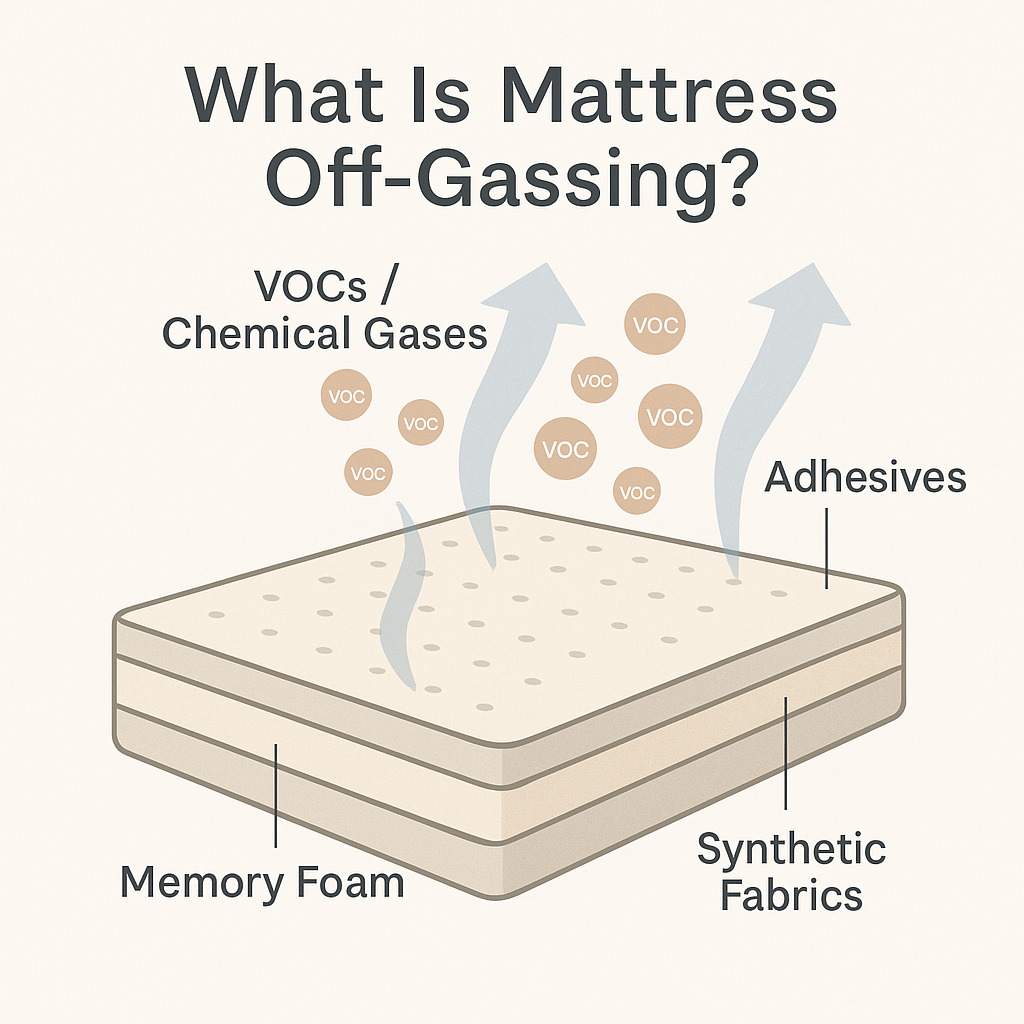
Off-gassing, scientifically known as volatile organic compound (VOC) emission, occurs when certain chemicals vaporize at room temperatures.
Off-gassing occurs when volatile organic compounds (VOCs) are released from foam materials, adhesives, or comfort layers in mattress type mattresses.
- Many new mattresses emit an initial odor—sometimes a slight odor, other times strong odors. Though generally harmless, some chemical sensitivities may be triggered by off gassing harmful VOCs from brand new products.
- Mattresses, particularly those made with synthetic materials, often contain VOCs introduced during manufacturing. The synthetic foam manufacturing process involves mixing specific chemicals.
- Over time, especially when exposed to warmth and airflow, these compounds transition from a solid or liquid state into gases released into the surrounding air.
- Newer products can accelerate this process, explaining why a bed in a box or freshly unboxed mattress often has a pronounced chemical smell.
While some VOCs are harmless, others can be detrimental to health and the environment.
Off-gassing occurs when certain harmful chemicals in foam mattresses and common household items release gases into the air. In the mattress industry, this “new mattress smell” comes from VOCs breaking down at room temperature. Natural materials like natural latex show less off gassing.
COMMON MATERIALS RESPONSIBLE FOR OFF-GASSING
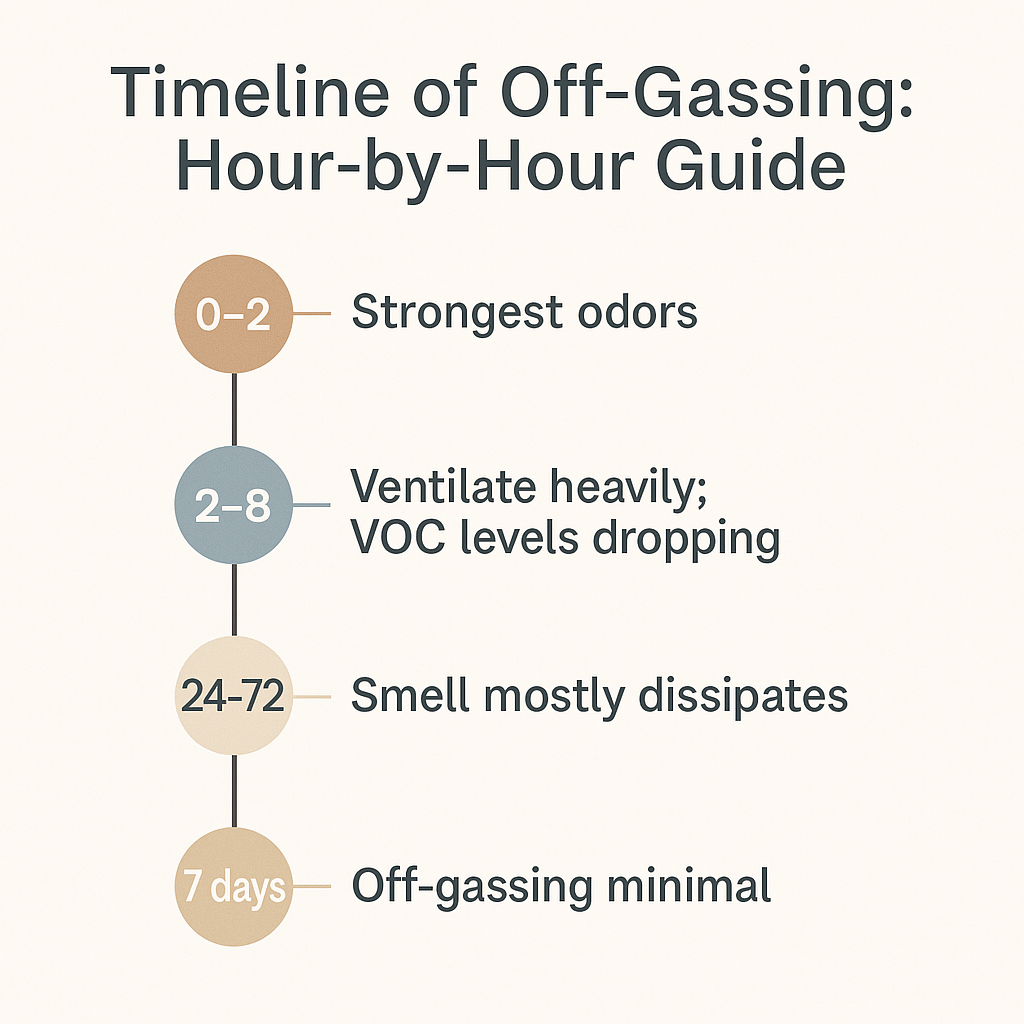
All foam, hybrid mattress, and blended latex models have varying off gassing potential depending on their manufacturing process and materials used.
Traditional innerspring models with metal springs and air chamber support units (like air chambers) typically have fewer off gassing odors than mattresses with thicker comfort systems or a thin layer of synthetic foam.
- Several materials are notorious for off-gassing in mattresses. Memory foam, often lauded for its comfort and support, is a prime culprit due to its reliance on petrochemicals.
- Polyurethane foam, a common core material in many mattresses, can release VOCs like toluene diisocyanate.
- Additionally, certain adhesives used to bond mattress layers contain formaldehyde, a known respiratory irritant. Flame retardants can release brominated compounds into the air to meet safety standards.
- Lastly, synthetic latex often contains styrene, another VOC, unlike its natural counterpart.
Many foam mattresses, adhesives, and flame retardants contain potentially harmful chemicals that cause a noticeable off gassing odor. All-foam comfort systems and some support core designs trap more VOCs, while toxic materials used in lower-quality models create more significant off gassing. Natural materials tend to produce far fewer emissions.
To better understand how certifications protect you from toxins, explore the value of mattress certifications that ensure safer materials
and reduce chemical exposure while you sleep.
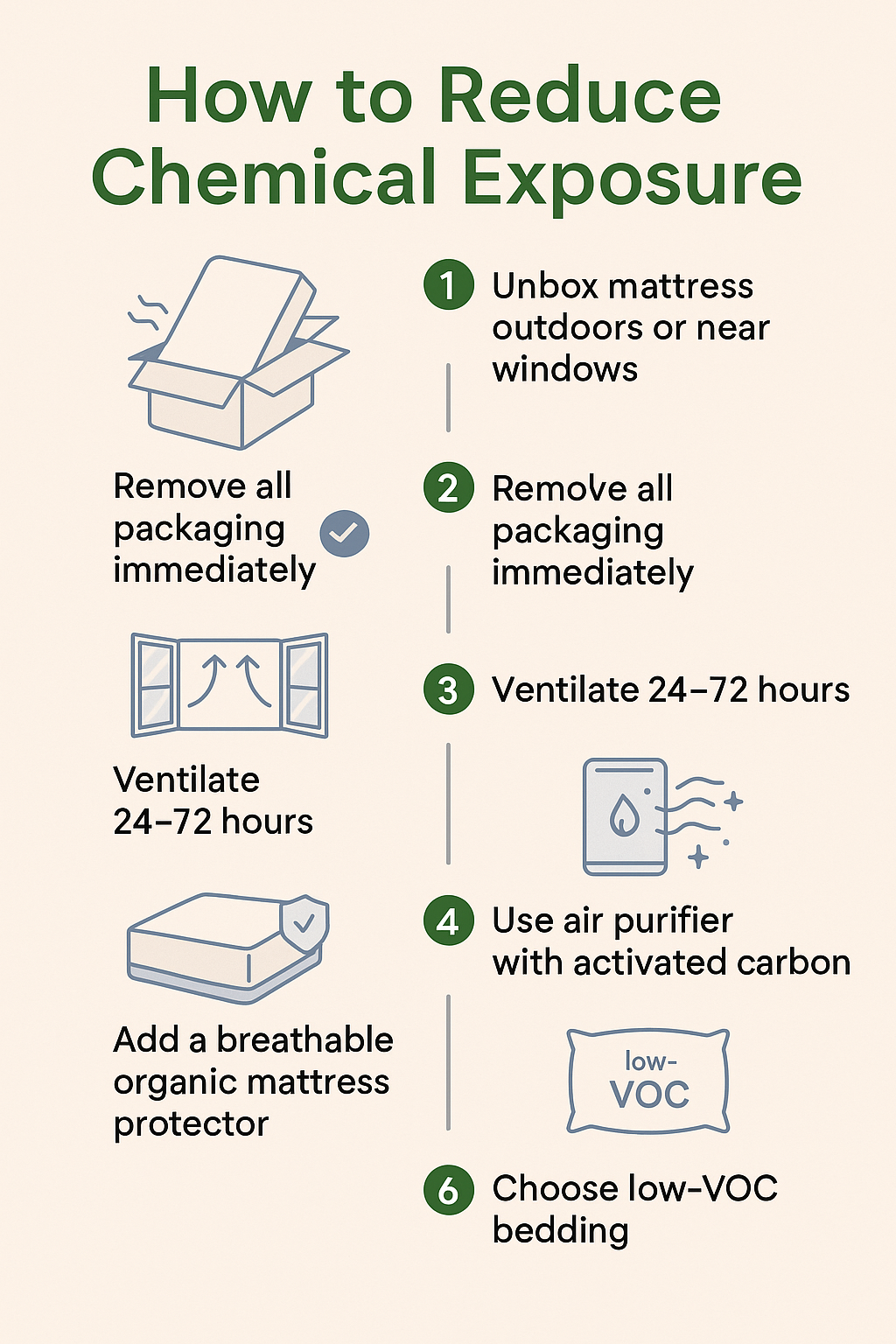
WHAT MATERIALS ARE SAFER?
Look for certified materials like those approved by Greenguard Gold or eco-INSTITUT, which ensure low chemical emissions.
Latex foam made with pure water and independently tested components tend to avoid off-gassing. Most hybrids and most popular mattress types now include comfort system updates to meet stricter standards.
HEALTH CONCERNS ASSOCIATED WITH MATTRESS WITH OFF-GASSING
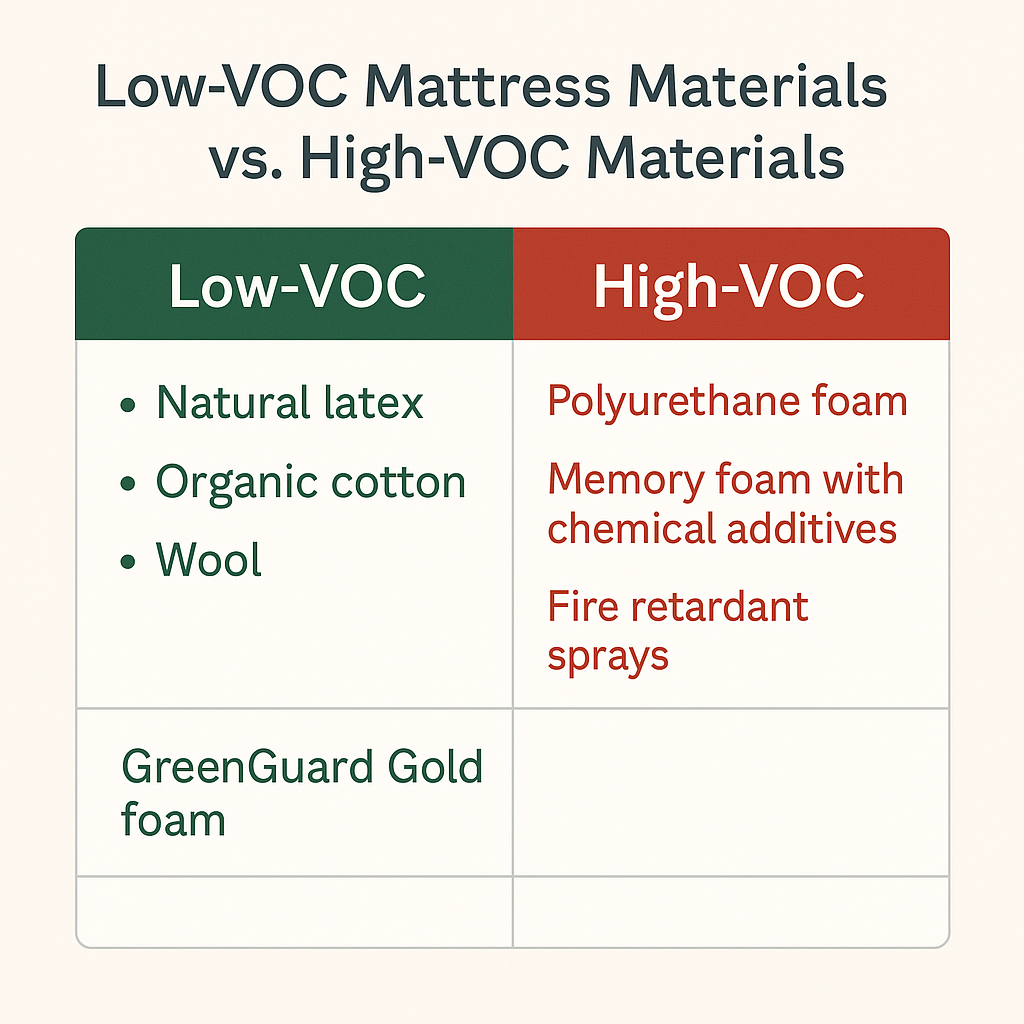
Mattress off-gassing concerns many new buyers. A mattress with severe off-gassing isn't merely an issue of unpleasant odors; it can have tangible health implications.
- Mattress manufacturers use CertiPUR-US certified foams, low-VOC materials, and natural fibers to reduce off-gassing in mattresses.
- How is the mattress off-gassing dangerous? People with asthma or other respiratory conditions may be more sensitive to the effects of VOCs, which can make them sicker.
- Short-term exposure to VOCs from mattresses might lead to symptoms like dizziness, headaches, throat or eye irritation, and worsening of asthma symptoms.
- Health concerns associated with mattresses with off-gassing include difficulty breathing and irritation from chemical compounds.
The polyfoam support core and comfort padding release odors that can be off-putting, impacting things sleep-related. These effects, stemming from the comfort materials, typically diminish within a few weeks.
Exposure to VOCs may lead to potential health effects such as headaches, irritation, or sensitivity to harmful off gassing. While most models meet safety regulations, individuals sensitive to certain harmful chemicals may react more strongly.
SIGNS YOUR MATTRESS MAY BE OFF-GASSING
How does the mattress smell?: A new mattress may release a distinct chemical-like smell, especially after unpacking.
- Allergic Reactions: Unexpected sneezing, skin irritations, or respiratory discomfort without any other apparent triggers.
- Increased Asthma Symptoms: Those with asthma might experience aggravated symptoms such as coughing or wheezing.
- Sleep Disruptions: The off-gassing chemicals might cause you to wake up feeling unrefreshed or experience interrupted sleep.
Eye or Throat Irritation: Sensations of burning, itching, or dryness without known environmental allergens.
Headaches or Dizziness: Onset of unexplained headaches or light-headedness, especially after getting a new mattress.
Common indicators include an unpleasant smell similar to new car smell or car smell, mild irritation, or discomfort when lying down. Foam layers within the comfort system or support core may release gases early on.
How Long Does Off-Gassing Last?
Off-gassing is not a permanent phenomenon. Typically, the initial phase effects of off-gassing, where most volatile organic compounds (VOCs) are released, occur within the first few hours to days after unboxing a new mattress. This period witnesses the most intense and noticeable off-gassing odors.
- As days become weeks, the intensity and frequency of the odors gradually diminish. By the end of the first month, most mattresses will have completed a significant portion of the off-gassing process.
- However, the complete off-gassing process might take several months, especially for mattresses with high concentrations of synthetic materials. The duration can vary based on the specific mattress materials and the room's ventilation.
- For most models, the initial odor fades within a few hours, though some foam mattresses take days to settle. Enhanced airflow and ventilating the room help reduce VOC levels faster. Natural latex and other natural materials tend to off-gas minimally, while products with toxic materials may linger long term.
Your mattress can impact overall wellness—learn howmaterials and sleep quality are closely connected in this guide focused on health, comfort, and long-term benefits.
Methods to Minimize Off-Gassing at Home
How is mattress off-gassing dangerous? It is due to toxic chemicals from mattress manufacturing, illuminating these odors' harmful effects.
Ventilate Your Space: Open windows and doors regularly to allow fresh air to circulate, facilitating the dispersal of off-gassing fumes.
- Air Out New Products: Before using new mattresses or furniture, allow them to air in a well-ventilated room for several days.
- Use Air Purifiers: Invest in a quality air purifier that can capture VOCs and other harmful compounds.
- Opt for low-VOC or VOC-free products: When purchasing, look for labels indicating lower VOC content or green certifications.
Houseplants for Cleaner Air: Some houseplants, like spider plants and peace lilies, are known to help absorb certain VOCs.
Place your mattress on a breathable bed frame, allow enhanced airflow, and keep windows open to help odors escape. Using common household items, such as fans or air purifiers, helps reduce potentially harmful chemicals. Most individuals notice that these steps improve off gassing performance and reduce the new mattress smell faster.
How to Minimize Off-Gassing Exposure
During the unboxing process, place your new bed in a well ventilated area, ideally with windows open and good airflow.
Let the initial smell dissipate sooner by adjusting humidity levels and allowing the mattress to sit for a few hours or even a few weeks, depending on the individual’s sensitivity and the presence of certain harmful chemicals. Baking soda can also help absorb material smell.
Proper Ventilation: A Solution Against New Mattress Smell
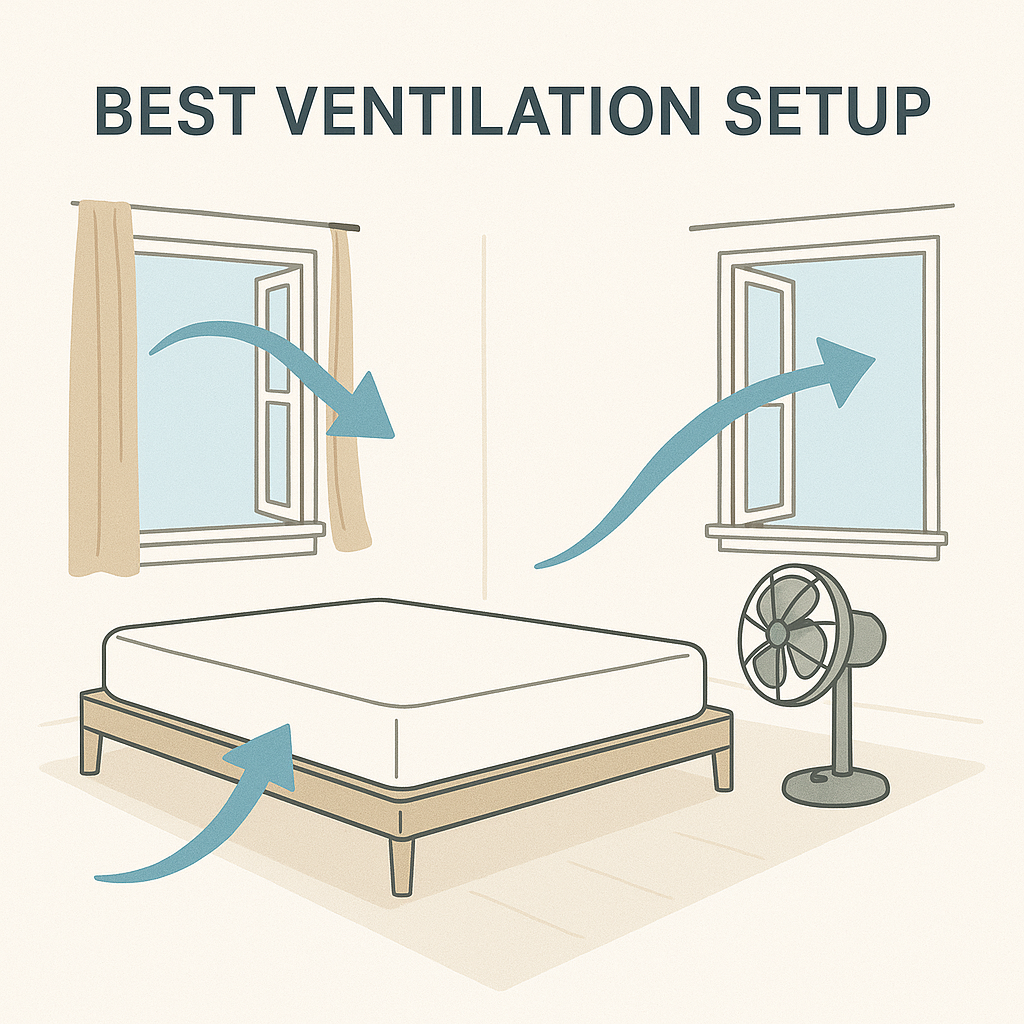
Proper ventilation reduces mattress off-gassing effects. The essence of healthy indoor living often boils down to one simple practice: adequate ventilation.
- Ensuring a consistent fresh air flow within our homes can significantly dilute and disperse off-gassed chemicals, promoting cleaner, safer air.
- While new mattresses or furniture might introduce more VOCs, routinely opening windows and using fans can hasten the dispersion of these compounds.
This is especially vital during the initial days following a new product's introduction.
Remember, the balance between comfort and health often hinges on the purity of our indoor air, making ventilation a paramount concern.
Increasing airflow is one of the simplest ways to reduce the new mattress smell and harmful VOCs. Open windows, elevate the mattress, and promote circulation around the coil system or foam layers. This helps disperse potentially harmful chemicals and makes the environment safer during the first time you unpack the bed.
A healthier bedroom starts with smarter choices—discover how mattresses and pillows shape your sleep environment and what to avoid to reduce off-gassing risks.
The Role of Mattress Covers and Protectors
Mattress covers and protectors serve a dual purpose: they guard against physical damage and act as a barrier to off-gassing chemicals.
- These products envelop the mattress, capturing and reducing the release of harmful VOCs into the room.
- A quality mattress cover made from non-porous materials can be particularly effective.
- They protect the sleeper from direct contact with outgassing materials and extend the mattress's lifespan by preventing spills, dust, and allergens from seeping in.
In choosing a protector, opt for one that’s breathable to ensure comfort isn’t compromised. Doing so combines protection with peace of mind, ensuring a healthier sleep environment.
Choosing a Low Mattress Off-Gassing
Many people are sensitive to mattress off-gassing. When in the market for a new mattress, prioritizing one with minimal outgassing potential is an eco-friendly and health-conscious choice.
- Start by researching certifications. Look for mattresses with certifications such as CertiPUR-US or GreenGuard Gold, which ensure the products have low VOC emissions.
- Another tip is to gravitate towards natural and organic materials. Latex, for example, especially when 100% natural, tends to have reduced off-gassing compared to synthetic material alternatives.
- Reading consumer reviews can be insightful. Users often share their personal experiences regarding more off-gassing odors with a particular mattress.
Certifications to Look For When Shopping For Mattress With Low Volatile Organic Compounds
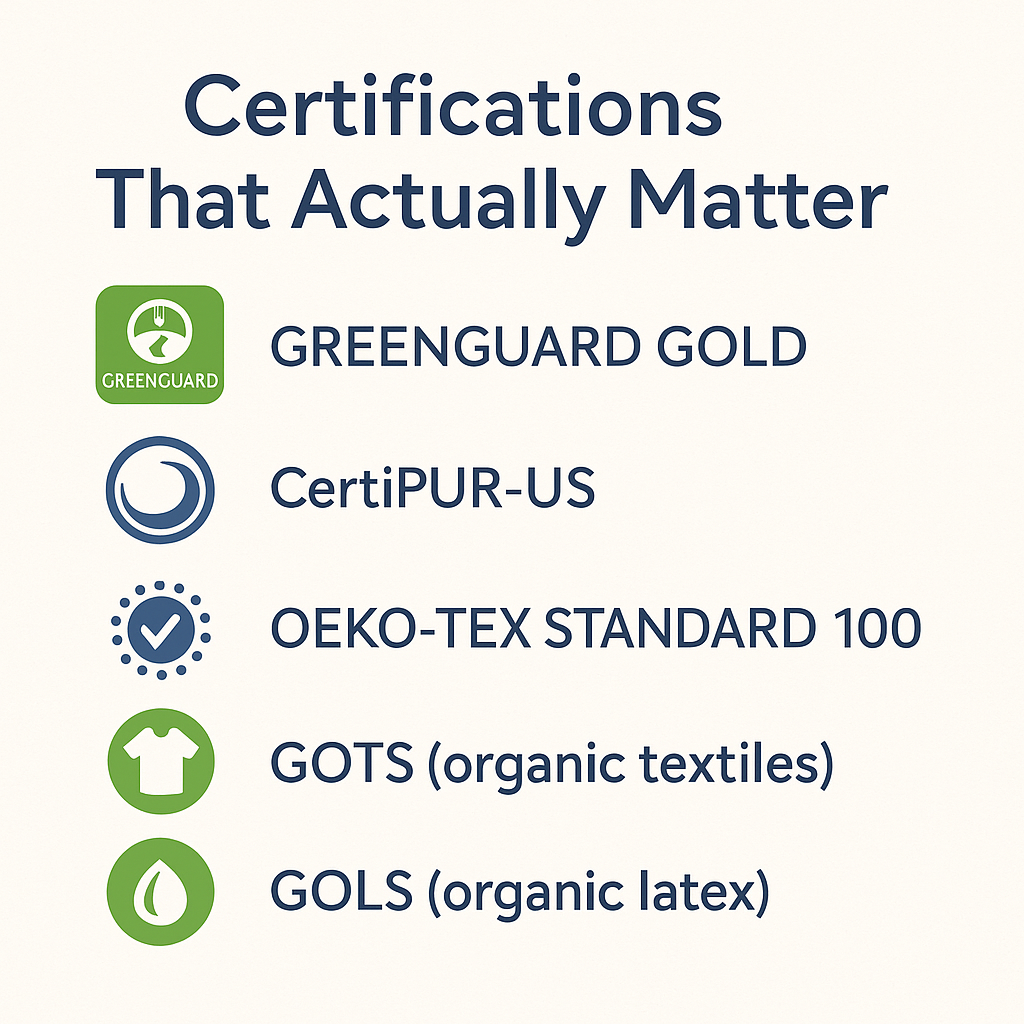
It would be best to always look for certifications about mattress off-gassing. Here are a few of them.
CertiPUR-US ensures that the polyurethane foam used in mattresses is free from harmful chemicals and has low VOC emissions, often due to using the same chemicals in their construction.
- GreenGuard Gold: This certification guarantees that a product meets strict criteria for low chemical emissions, promoting healthier indoor air quality.
- Organic Content Standard (OCS): Ensures the organic status of textiles and materials.
- OEKO-TEX Standard 100: Confirms that every product component has been tested for harmful substances.
- Global Organic Latex Standard (GOLS): Assures that a latex product is made of organic raw materials.
Headaches or Dizziness: Onset of unexplained headaches or light-headedness, especially after getting a new mattress.
Conclusion
In the vast landscape of mattresses, knowledge truly is power.
I hope I have shown you that by understanding off-gassing, you and I can make healthier choices and foster a safer sleeping environment.
VOCs and other off-gassing elements can affect our well-being, making selecting mattresses that prioritize low emissions crucial.
By emphasizing certifications, proper ventilation, and protective measures, we can significantly reduce exposure risks and ensure healthier sleep for ourselves and our loved ones.
FAQs
How long does it take a mattress to Offgas?
Mattress off-gassing is a temporary phenomenon. Its durations vary, but most mattresses finish off-gassing within a week. However, some might take longer, depending on materials and environmental factors. Proper ventilation accelerates the process, ensuring a fresher sleeping environment.
What are the symptoms of an off-gassing mattress?
Off-gassing mattresses can cause symptoms like headaches, dizziness, respiratory issues, skin irritation, and a pungent chemical odor. Prolonged exposure might exacerbate these effects, so recognizing and addressing them is crucial for health and comfort.
Are mattress VOCs toxic?
Mattress VOCs (Volatile Organic Compounds) can be harmful. While not all VOCs are toxic, prolonged exposure to certain VOCs from mattresses may pose health risks, including respiratory issues, headaches, and skin irritations. Always research and choose wisely.
Do foam mattresses give off gas?
Yes, memory foam mattresses can be off-gas. Particularly, memory foam mattresses release Volatile Organic materials initially. The off-gassing often results in a distinct odor, which diminishes after a few days with proper ventilation.
